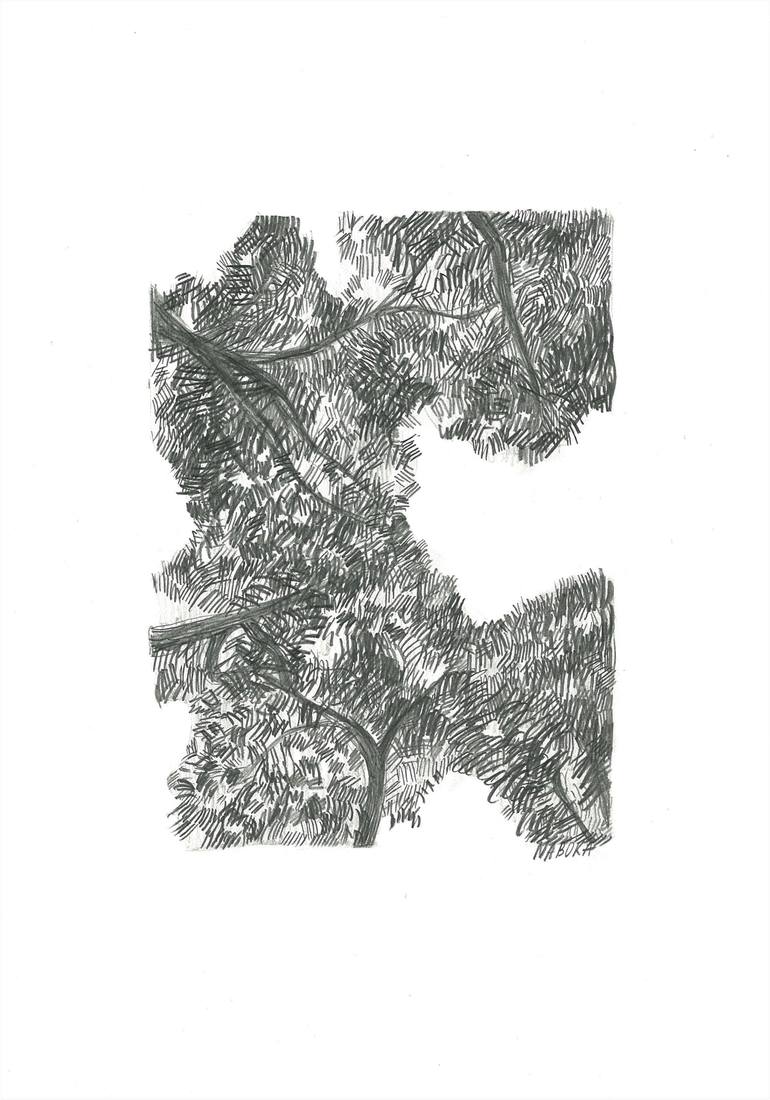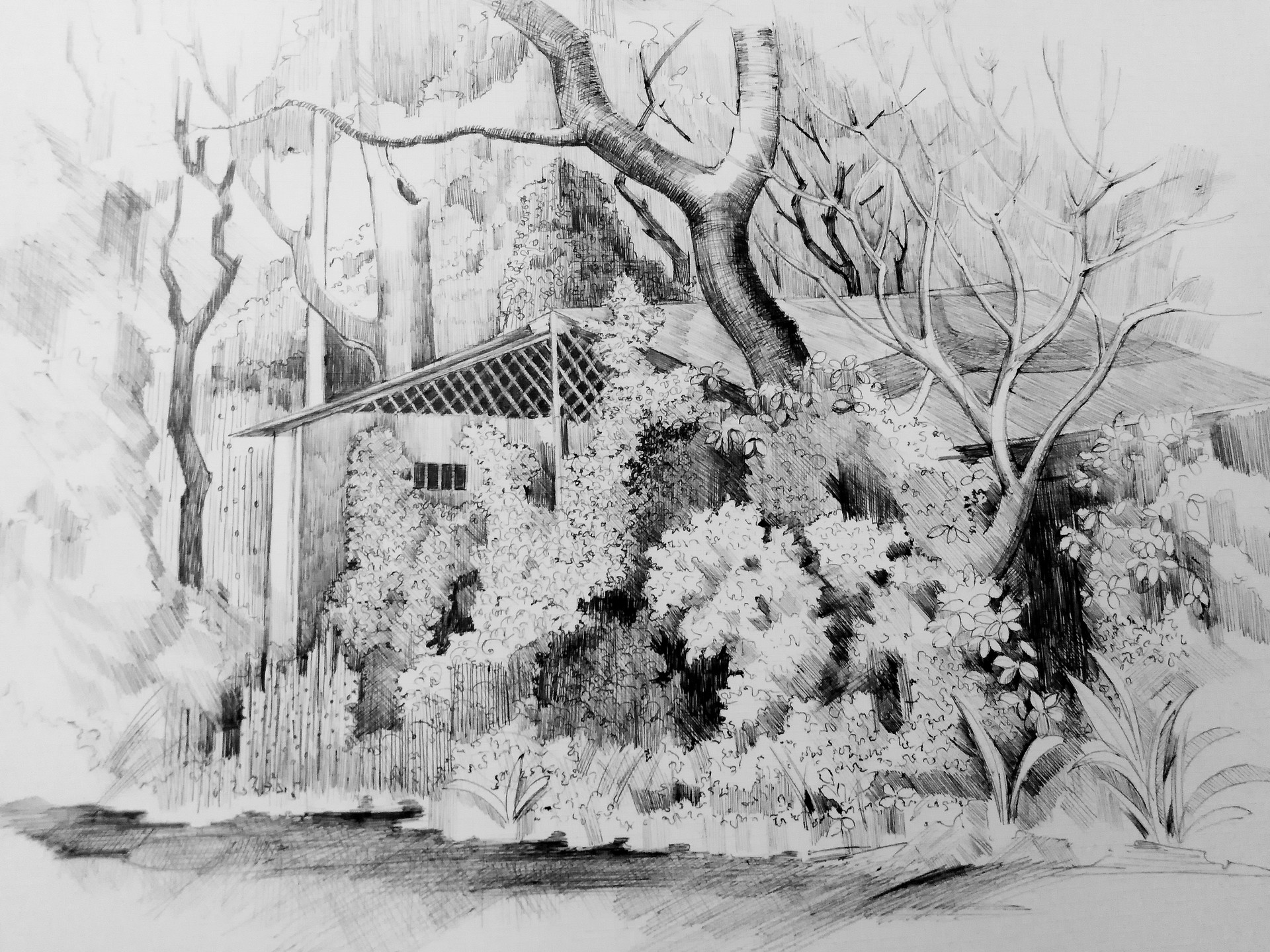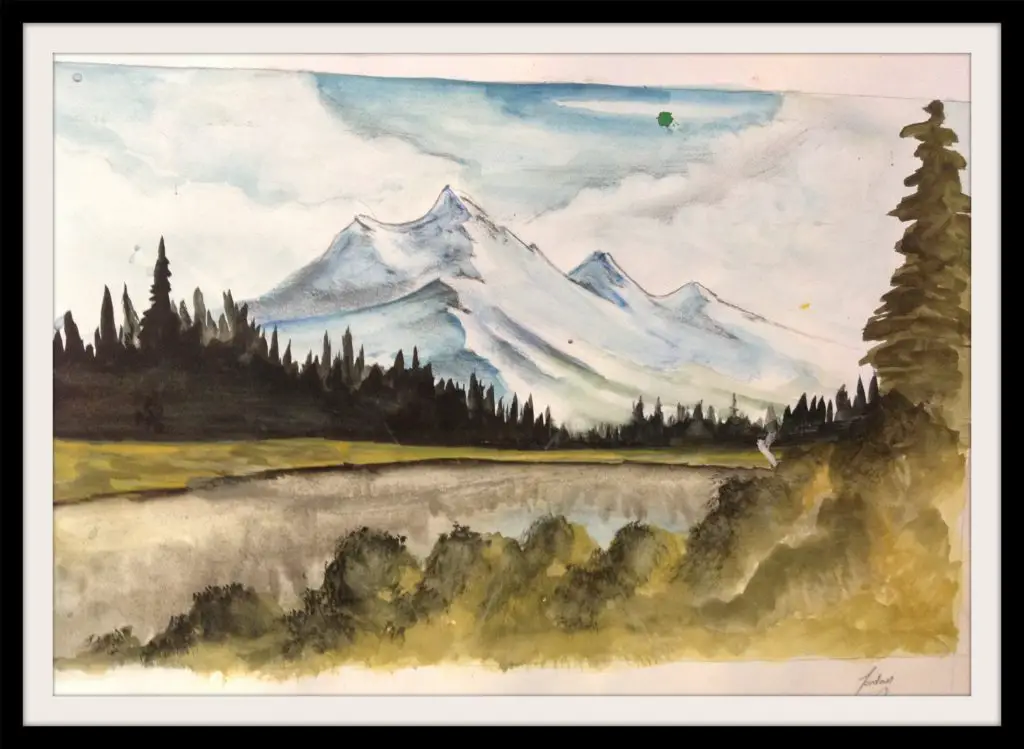

The leading ideas must be fixed on the spot: if left to the memory, they soon evaporate. Gray says, relates chiefly to verbal description: but in lineal description it is equally true. With a few strokes of our own imagination." *- What Mr.

Without accurate, and particular observation, it is but ill-drawn at first: the outlines are soon blur∣red: the colours, every day grow fainter and at last, when we would produce it to any body, we are obliged to supply it's defects When we trust to the picture, that objects draw of themselves on the mind, we deceive ourselves. Gray, fixed on, or near the spot, is worth all our recollected ideas. A few lines drawn on the spot, will do this. It is enough if you express general shapes and the relations, which the several intersections of a country bear to each other. The virtue of these hasty, black-lead sketches consists in catching readily the cha∣racteristic features of a scene. Nothing glides so volubly over paper, and executes an idea so quickly.-It has besides, another advantage it's grey tint corresponds better with a wash, than black, or red chalk, or any other pastile. In sketching, black-lead is the first instru∣ment commonly used. This will en∣able you the more easily to ascertain the re∣lative situation of the several objects. If the landscape before you is extensive, take care you do not include too much: it may perhaps be divided more commodiously into two sketches.-When you have fixed the portion of it, you mean to take, fix next on two or three principal points, which you may just mark on your paper.
SKETCH OF LANDSCAPE HOW TO
Having thus fixed your point of view, your next consideration, is, how to reduce it properly within the compass of your paper: for the scale of nature being so very different from your scale, it is a matter of difficulty, without some experience, to make them coin∣cide. The ground, which folds awkwardly here, appears to fold more easily there: and that long blank curtain of the castle, which is so unpleasing a circumstance, as you stand on one side, is agreeably broken by a buttress on another.

A few paces to the right, or left, make a great difference. With regard to the former, when you meet a scene you wish to sketch, your first consi∣deration is to get it in the best point of view. or to convey, in some degree, your ideas to others. Your intention in taking views from nature, may either be to fix them in your own memory Let me only add, that altho this essay is meant chiefly to assist the picturesque traveller in taking views from nature, the method recommended, as far as it relates to execution, may equally be applied to imaginary sketches. I shall however dwell no longer on ima∣ginary sketching, as it hath but little relation to my present subject. It will always however be understood, that such sketches must be examined also by an eye learned in the art, and accustomed to pictu∣resque ideas-an eye, that can take up the half-formed images, as the master leaves them give them a new creation and make up all that is not expressed from it's own store-house. And in these happy moments, when the enthusiasm of his art is upon him, he often produces from the glow of his imagi∣nation, with a few bold strokes, such wonder∣ful effusions of genius, as the more sober, and correct productions of his pencil cannot equal. These, like a magician, he calls up at pleasure with a wave of his hand bringing before the eye, sometimes a scene from history, or ro∣mance Īnd sometimes from the inanimate parts of nature. The imagination of a painter, really great in his profession, is a magazine abound∣ing with all the elegant forms, and striking effects, which are to be found in nature. It is his first conception which is commonly the strongest, and the most brilliant.

Sketches are either taken from the imagi∣nation, or from nature.-When the imaginary sketch proceeds from the hands of a master, it is very valuable. Each is equally necessary to fix, and communicate it's respective ideas. THE art of sketching is to the picturesque traveller, what the art of writing is to the scholar.


 0 kommentar(er)
0 kommentar(er)
